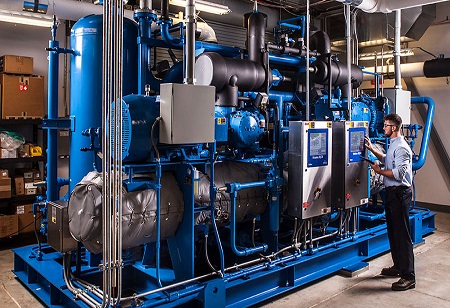There is a conspicuous transition happening across industries to meet the rising demand for refrigeration and cooling. Be it the long term storage of products or ensuring that the operations continue unimpeded, the increasing applications of refrigeration and cooling are inviting technology and innovation to rise to the occasion and throw up novel advanced systems.
Refrigeration systems are essential elements of several industries from oil and gas, pharmaceutical to food processing.
In oil and gas industry, they are being used in various processes starting from the extraction of natural gas and oil from the reservoir rocks in the form of crude oil and natural gas to the transportation to end consumers. When it comes to the food processing industry, long term storage of processed food items has become an immediate requirement, even more so after the advent of the pandemic. The ministry of food processing industries is making efforts to encourage investments in the sector.
With the concerted effort of industry and governmental policy support, the commercial refrigeration market is expected to see substantial growth in the coming years. Majority of the research reports forecast the industry to become worth more than $30 billion in the next five years.
“Based on the application, the refrigerated warehouse segment is expected to grow at higher CAGR due to the increasing population coupled with rising disposable income, which has in turn increased the demand for frozen and processed food.
In addition, rising demand for convenience products such as ready to eat foods across the globe has further increased in the number of refrigerated warehouses worldwide with enhanced capacity,” says a report by CE ResearchHub.
Moving away from synthetic refrigerants
If we look at the trends in industrial refrigeration, the most obvious one is the transition from halocarbon refrigerants of all types towards use of ammonia. This is to some extent due to the size of typical installations but is also a harbinger of transition away from synthetic refrigerants. After 1974, use of halo-carbons saw a restraint in terms of application as they were proven to have adverse effect on the stratospheric ozone layer that protected the earth from harmful ultra-violet radiation.
On the other hand, ammonia having a higher cooling capacity than other refrigerants has exhibited its capability of making refrigeration systems more energy-efficient than those based on other refrigerants. In addition, the ready availability of ammonia at low cost reduces the total cost of operation of the refrigeration systems powered by it.
With the transition towards ammonia as refrigerant, the industry is also witnessing a move towards increasing use of screw compressors. It is only obvious because in industrial refrigeration systems, compressors play a vital role by increasing refrigerant vapour pressure in a condenser. The process ensures that a suitable temperature is maintained for food storage and preservation applications.
Continual Enhancement
As more and more companies plan to develop new compressors to meet the diverse needs of customers, the market is expected to only growth further. Another important part is electronics wherein the capabilities have been rising since the advent of digital technologies. Evolving gradually, the market has now reached a point where it is possible to control and indicate refrigerating systems remotely and in real time. This is a significant breakthrough for the enhancement of the systems through diagnostic procedures. An added advantage is that the data can be transmitted to any location across the globe.
Moving forward, the greatest challenge for original equipment manufacturers and operators in this segment is going to be the paradigm shift to the future of refrigeration systems. As the global warming concerns snowball, there are going to be serious restrictions on the kind of refrigerant being used in the systems and the manufacturers will have to come up with new refrigeration equipment, components and technologies. While mitigating the threat of global warming by restricting the choice of refrigerant available, the challenge would be to keep the efficiency levels as desired.
